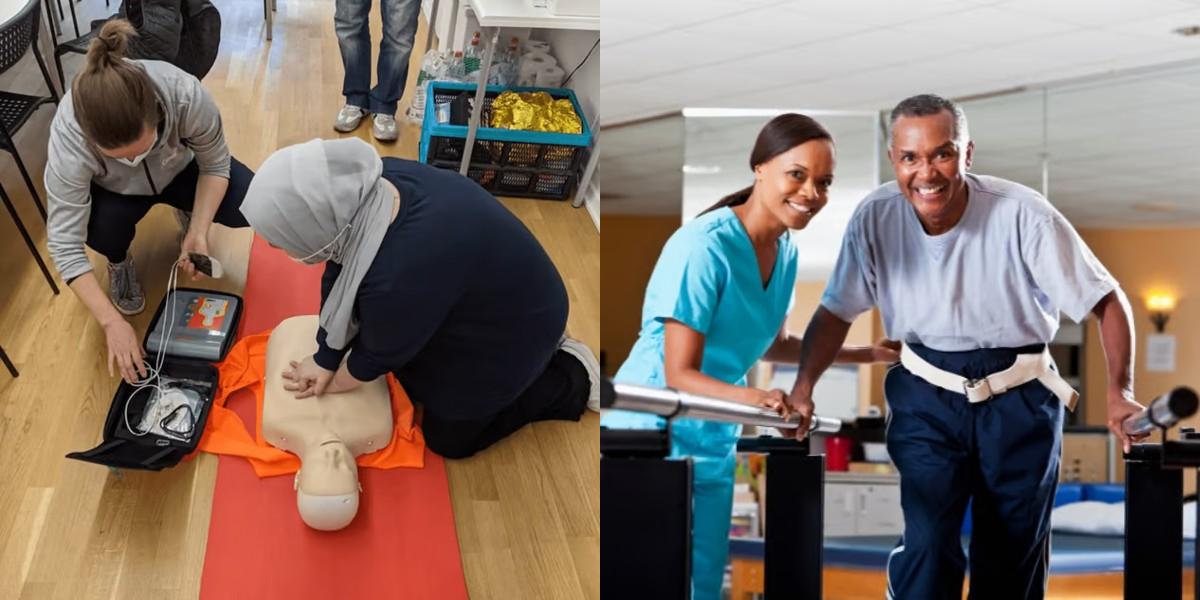CPR-BLS vs Physical Therapy Technician

Key Points:
- CPR-BLS providers perform emergency life-saving techniques, while Physical Therapy Technicians assist physical therapists in patient care and rehabilitation.
- CPR-BLS providers typically earn less than Physical Therapy Technicians.
- Both jobs have good job prospects.
- CPR-BLS training is often completed through online or in-person courses, while Physical Therapy Technicians require in-person training and certification.
- CPR-BLS training is generally less expensive and shorter in duration than Physical Therapy Technicians.
When it comes to choosing a career in the medical field, there are numerous options available. Two popular choices are becoming a CPR-BLS (Basic Life Support) provider or a Physical Therapy Technician. While both roles involve working with patients and providing healthcare services, they differ in terms of job description, education and training requirements, and career outlook. In this blog post, we will explore the similarities and differences between these two professions to help you make an informed decision about your career path.
CPR-BLS vs Physical Therapy Technician: Education and Training
CPR-BLS Provider:
- Completion of a certified CPR-BLS training program (duration varies)
- Certification from organizations such as the American Heart Association or the Red Cross
Physical Therapy Technician:
- Completion of a post-secondary vocational program or an associate's degree in physical therapy assisting (duration typically 1-2 years)
- Clinical experience through internships or supervised practical training
CPR-BLS vs Physical Therapy Technician: Career Outlook and Salary
CPR-BLS Provider:
- Job outlook: The demand for CPR-BLS providers is expected to remain steady, as emergencies can happen at any time. Opportunities may be available in hospitals, clinics, schools, and other settings where immediate medical intervention may be required.
- Salary: The salary of CPR-BLS providers can vary depending on factors such as experience, location, and work setting. On average, they can earn around $35,000 to $50,000 per year.
Physical Therapy Technician:
- Job outlook: The demand for Physical Therapy Technicians is projected to grow faster than the average for all occupations. This growth is driven by an aging population and the increasing need for rehabilitative services. Opportunities may be available in hospitals, nursing homes, outpatient clinics, and rehabilitation centers.
- Salary: The salary of Physical Therapy Technicians can vary depending on factors such as experience, location, and work setting. On average, they can earn around $30,000 to $45,000 per year.
Final Thoughts
Choosing between a career as a CPR-BLS provider or a Physical Therapy Technician ultimately depends on your interests, skills, and career goals. If you thrive in high-pressure situations and have a passion for saving lives, becoming a CPR-BLS provider may be the right choice for you. On the other hand, if you enjoy working with patients on their journey towards recovery and improving physical function, pursuing a career as a Physical Therapy Technician can be rewarding.
Consider your personal preferences, educational requirements, and long-term career prospects when making your decision. Both professions play critical roles in the healthcare industry and offer opportunities to make a positive impact on people's lives.
Dreambound has strategically placed its educational programs in various locations, making it easy for aspiring individuals to access valuable opportunities. For a thorough insight into the dynamic realms of these two vocations, we encourage you to delve into more detailed information by visiting:

Vduani Martinez is a part of the Growth team at Dreambound. She creates and fixes workflows and automation to guarantee seamless operations. On top of that, she manages databases to ensure all information is up to date. Vduani is a licensed Electronics Engineer who loves coffee and is a travel enthusiast. Out of the office, she enjoys going on road trips and discovering new cafes and restaurants.



